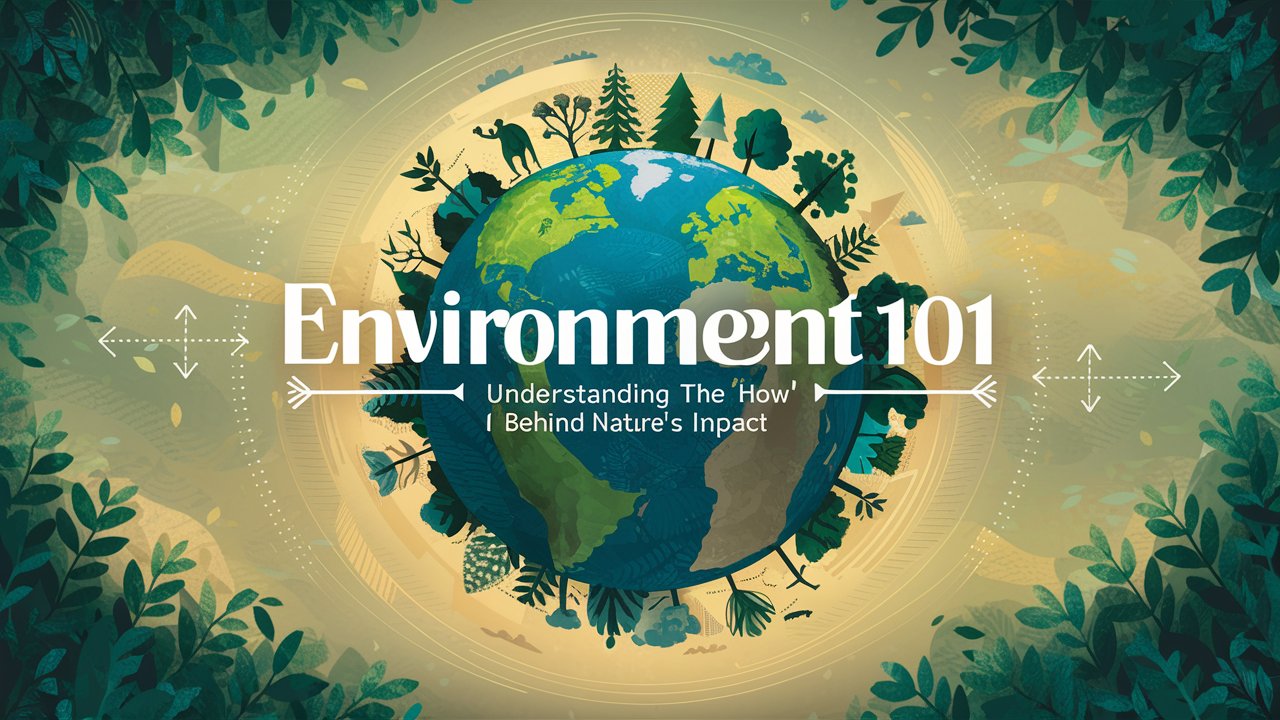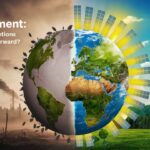The environment is a complex and interconnected system that influences every aspect of life on Earth. From the air we breathe to the food we eat, the environment plays a critical role in shaping our health, well-being, and survival. However, as human activities increasingly disrupt natural processes, understanding how the environment works and how our actions impact it has never been more important.
This blog aims to explore the foundational concepts of environmental science, focusing on the mechanisms that drive natural processes and how human activities are altering these systems. By gaining a deeper understanding of the “how” behind nature’s impact, we can make more informed decisions and take action to protect the environment for future generations.
The Interconnectedness of Natural Systems
The environment is made up of various interconnected systems, each of which plays a crucial role in maintaining the balance of life on Earth. These systems include the atmosphere, hydrosphere, lithosphere, and biosphere. Together, they regulate the planet’s climate, distribute water, cycle nutrients, and support biodiversity.
The atmosphere, composed of gases like oxygen, nitrogen, and carbon dioxide, acts as a protective shield around the Earth. It regulates temperature, filters harmful ultraviolet radiation, and provides the air we breathe. The hydrosphere, which includes all of the Earth’s water bodies, is essential for life. It plays a key role in regulating climate, supporting ecosystems, and providing resources for agriculture and human consumption.
The lithosphere, or Earth’s crust, is the outermost layer of the planet, composed of rocks, minerals, and soil. It supports plant life, stores nutrients, and plays a crucial role in the Earth’s energy and material cycles. The biosphere encompasses all living organisms and their interactions with the physical environment. It is the foundation of ecosystems, where plants, animals, and microorganisms interact to create a dynamic web of life.
Understanding the interconnectedness of these natural systems is essential for grasping how the environment functions as a whole. Changes in one system can have ripple effects throughout the others, leading to complex and sometimes unpredictable outcomes.
Natural Cycles and Processes
The environment is governed by a series of natural cycles and processes that maintain balance and support life. These include the water cycle, carbon cycle, nitrogen cycle, and energy flow through ecosystems. Each of these cycles plays a vital role in sustaining the planet’s health and stability.
The water cycle, also known as the hydrological cycle, involves the continuous movement of water between the Earth’s surface, atmosphere, and underground reservoirs. This cycle is driven by solar energy, which causes water to evaporate from oceans, rivers, and lakes. The water vapor then condenses into clouds and eventually falls back to the Earth as precipitation. This process replenishes freshwater supplies, supports plant growth, and regulates climate.
The carbon cycle is a key process that regulates the Earth’s climate by controlling the levels of carbon dioxide in the atmosphere. Carbon is exchanged between the atmosphere, oceans, soil, and living organisms through processes such as photosynthesis, respiration, decomposition, and fossil fuel combustion. Plants play a critical role in the carbon cycle by absorbing carbon dioxide during photosynthesis and storing it in their tissues. When plants die and decompose, carbon is released back into the atmosphere or stored in the soil.
The nitrogen cycle is another essential process that supports life on Earth. Nitrogen is a crucial component of proteins and DNA, making it essential for the growth and reproduction of all living organisms. The nitrogen cycle involves the conversion of atmospheric nitrogen into forms that can be used by plants and animals. This process is carried out by bacteria in the soil, which convert nitrogen gas into ammonia, nitrites, and nitrates that plants can absorb through their roots.
Energy flow through ecosystems is a fundamental process that drives the movement of energy from the sun to producers, consumers, and decomposers. Plants, as primary producers, capture solar energy through photosynthesis and convert it into chemical energy stored in their tissues. Herbivores, or primary consumers, feed on plants and obtain energy, which is then passed on to secondary and tertiary consumers, such as carnivores and omnivores. Decomposers, such as bacteria and fungi, break down dead organisms and release energy back into the ecosystem.
These natural cycles and processes are essential for maintaining the balance and health of the environment. However, human activities are disrupting these cycles, leading to environmental degradation and long-term consequences.
Human Impact on the Environment
Human activities have significantly altered the environment, disrupting natural cycles, degrading ecosystems, and contributing to climate change. Industrialization, urbanization, deforestation, pollution, and the overexploitation of natural resources are some of the key drivers of environmental degradation.
The burning of fossil fuels for energy, transportation, and industry is one of the primary sources of carbon dioxide emissions, contributing to the greenhouse effect and global warming. As the concentration of greenhouse gases in the atmosphere increases, the Earth’s temperature rises, leading to a range of impacts, including more frequent and severe weather events, rising sea levels, and shifts in ecosystems.
Deforestation, or the clearing of forests for agriculture, logging, and urban development, has a profound impact on the environment. Forests play a crucial role in absorbing carbon dioxide, regulating climate, and supporting biodiversity. When forests are cleared, the carbon stored in trees is released into the atmosphere, contributing to climate change. Deforestation also leads to habitat loss, threatening the survival of countless species and disrupting ecosystems.
Pollution, in its many forms, is another major environmental issue. Air pollution from industrial emissions, vehicle exhaust, and burning fossil fuels contributes to respiratory diseases, acid rain, and climate change. Water pollution from agricultural runoff, industrial waste, and plastic debris contaminates water bodies, harming aquatic life and posing risks to human health. Soil pollution from pesticides, chemicals, and waste disposal degrades soil quality, reducing its ability to support plant growth and filtering pollutants.
The overexploitation of natural resources, such as water, minerals, and fisheries, is depleting the Earth’s natural capital and threatening the sustainability of ecosystems. Unsustainable farming practices, overfishing, and the extraction of fossil fuels are leading to the depletion of resources, loss of biodiversity, and degradation of ecosystems.
The Importance of Environmental Awareness and Action
As the impact of human activities on the environment becomes increasingly evident, it is more important than ever to raise awareness and take action to protect the planet. Understanding the “how” behind nature’s impact can empower individuals, communities, and governments to make informed decisions and implement sustainable practices.
Environmental awareness involves recognizing the importance of the environment and understanding the ways in which human activities affect natural systems. It also involves being informed about the challenges facing the environment, such as climate change, biodiversity loss, and pollution, and the solutions that can help address these issues.
Taking action to protect the environment requires a collective effort at all levels of society. Individuals can make a difference by adopting sustainable practices in their daily lives, such as reducing energy consumption, minimizing waste, conserving water, and supporting environmentally-friendly products and services. Communities can work together to protect local ecosystems, promote renewable energy, and advocate for policies that prioritize environmental protection.
Governments play a critical role in setting regulations and policies that protect the environment and promote sustainability. This includes implementing laws to reduce greenhouse gas emissions, protect endangered species, regulate pollution, and promote renewable energy sources. International cooperation is also essential for addressing global environmental challenges, such as climate change and biodiversity loss.
Conclusion
The environment is a complex and interconnected system that sustains life on Earth. Understanding the mechanisms that drive natural processes and how human activities impact these systems is essential for protecting the planet and ensuring a sustainable future. By raising awareness, taking action, and promoting sustainable practices, we can work together to protect the environment and preserve the natural world for generations to come.





